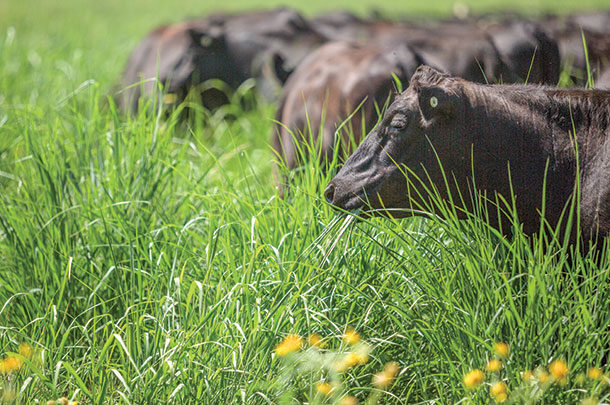For the majority of us, June is the most productive month of the year for forage production. Generally speaking, we should expect 60 to 70 percent of our annual forage to be produced by the end of the month, which makes June so critical for timely forage management.
The exceptions to this rule are the southwestern U.S., the true West Coast region and acres under irrigation through the growing season.
Many regions have experienced extremes in rainfall and snowfall through the winter and early spring. Some regions began receiving rainfall last fall followed by a long, wet winter, providing much-needed recharge into our pasture soils. Spring moisture conditions have been favorable, with most of the U.S. off to a good growing season now, even with an extended winter in northern and northeastern states.
The USDA Drought Monitor indicates very few areas of the U.S. are experiencing dry or moderate drought conditions so, moisture-wise, most of us are off to a good start. A favorable spring and early summer make pasture and grazing management much easier.
Prepare pastures and plans for optimal production
The first thing we should ask ourselves as we move into June is: Have we prepared our pastures and grazing plan for optimal production? Specifically, have we:
- Applied our fertilizer to introduced and forage crop pastures according to yield goals and soil test recommendations?
- Applied pesticides where needed to protect our investment in the desired forages?
- Made plans to harvest excess forages and to make the subsequent nutrient applications, if desired or needed?
- Applied appropriate herbicides in pastures with abundant undesired herbaceous plants (weeds) inhibiting production of desired forages?
- Made plans to apply appropriate herbicides to undesired woody species once the optimum window for efficacious results is reached? This is typically after the leaves of woody species are fully developed, actively photosynthesizing and translocating nutrients into the root systems.
- Taken appropriate management steps to address specific issues for pastures in degraded conditions? These should be fully underway and closely monitored.
- Closely monitoring and carefully managing newly established forage stands? The success or failure of a new stand is often determined by management and conditions during the first few months of the first growing season.
If you are late in some of your early growing season pasture management activities, push to complete them as soon as possible. Otherwise, you could lose 20 to 40 pounds of dry matter production per acre for every day after the optimal growing degree day is reached for the warm-season forage being managed. This lost production is unlikely to be produced or recovered later in the growing season.
The month of June sets the level of forage production potential of our operations across most of the U.S. If June is a good forage production month for us, the rest of the growing season is often more favorable for our pastures as well. Therefore, it is crucial to implement the management strategies necessary for successful forage production by early June.
Decide grazing management strategies early
Early June or before is also the time to decide on your grazing management strategies, including identifying the pastures that need extra recovery or rest. For those pastures, deferring grazing through the early growing season until forages are at optimal production gives plants time to build root systems and achieve near-maximum canopy cover prior to defoliation.
On these types of pastures, using a “top-grazing” approach, in which only the top one-third of the leaf area is grazed before resting the pasture again, is beneficial to improving stand health and productivity.
In native range pastures, an excellent strategy to enhance recovery of degraded stands is to defer grazing for the full growing season and then graze the pasture as standing forage after frost. This strategy, however, requires advanced planning and often some adjustments to stocking rate.
Ultimately, stocking rate is the most important decision producers have to make in their grazing plan. Although using an adaptive, flexible stocking rate where stock numbers are adjusted relative to growing conditions would be ideal, it is rarely practiced by most producers.
Rather, we strive to set a stocking rate that can be supported without much intended elasticity. This lends itself to the practice of establishing more conservative stocking rates and, in favorable production years, seeking opportunities to use extra forage or provide additional recovery to pastures that would benefit from it.
Keep past seasons, predicted weather in mind
Recent weather trends – featuring more-frequent fluctuations and greater intensities of extremes across the country – should influence our management toward a more conservative and intentional approach to our pasture and grazing management.
The greatest probability for a successful forage season comes from preparing operational strategies based upon predicted weather conditions as well as adapting our management strategies to address issues or opportunities carried over from the previous seasons.
With June being the most critical forage month for most of us producers, our pasture and grazing management strategies should be fully implemented early in this month to capture the full potential of our growing season.










